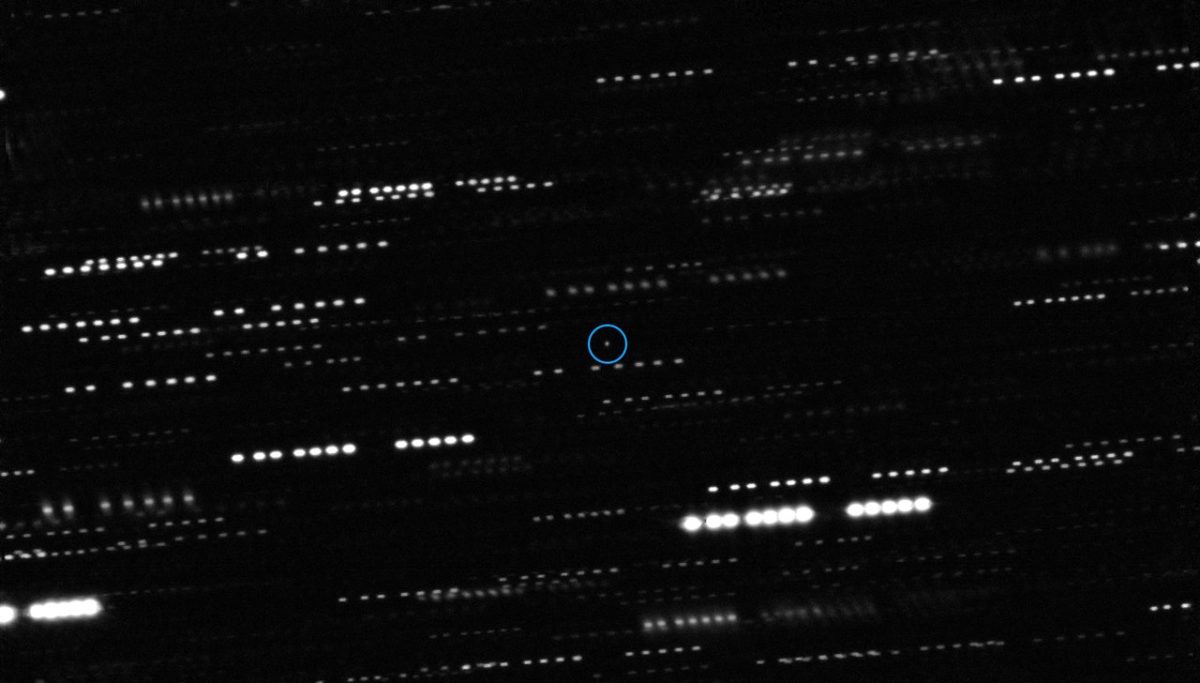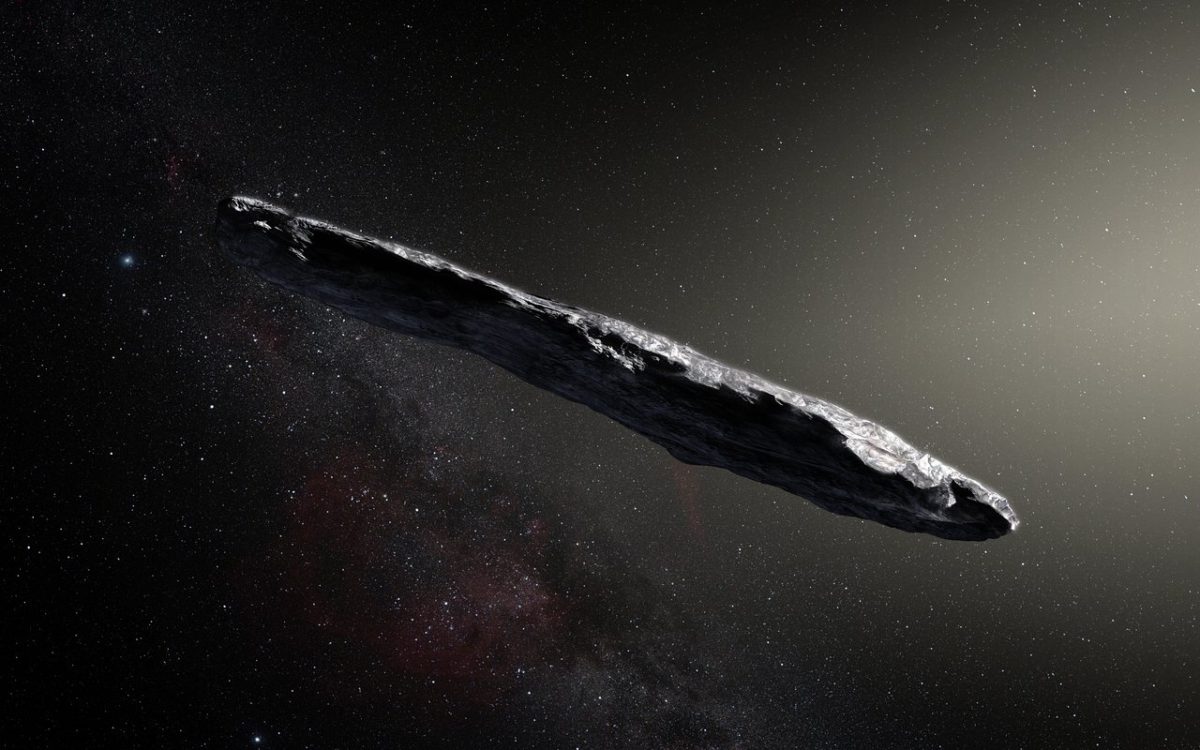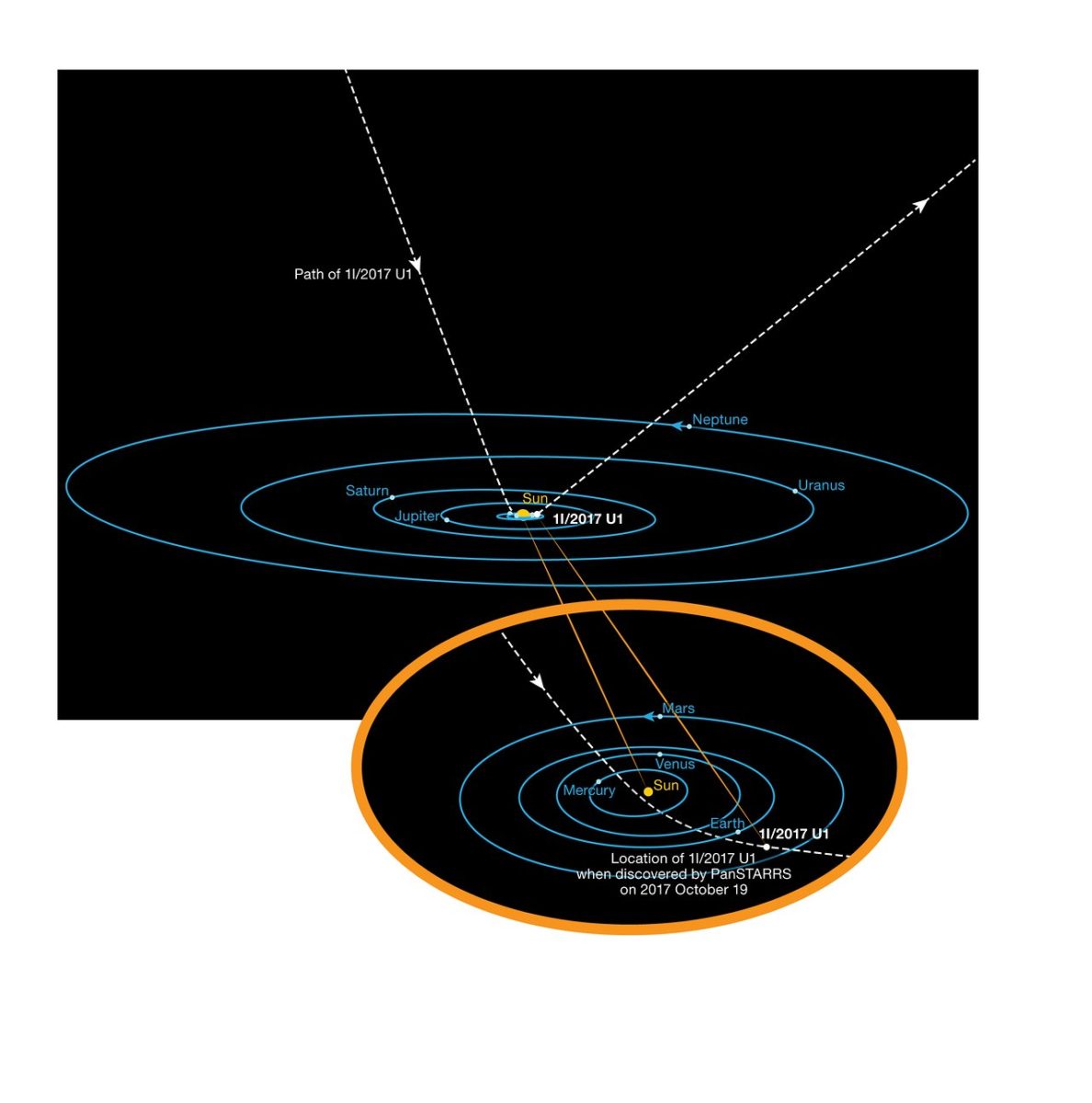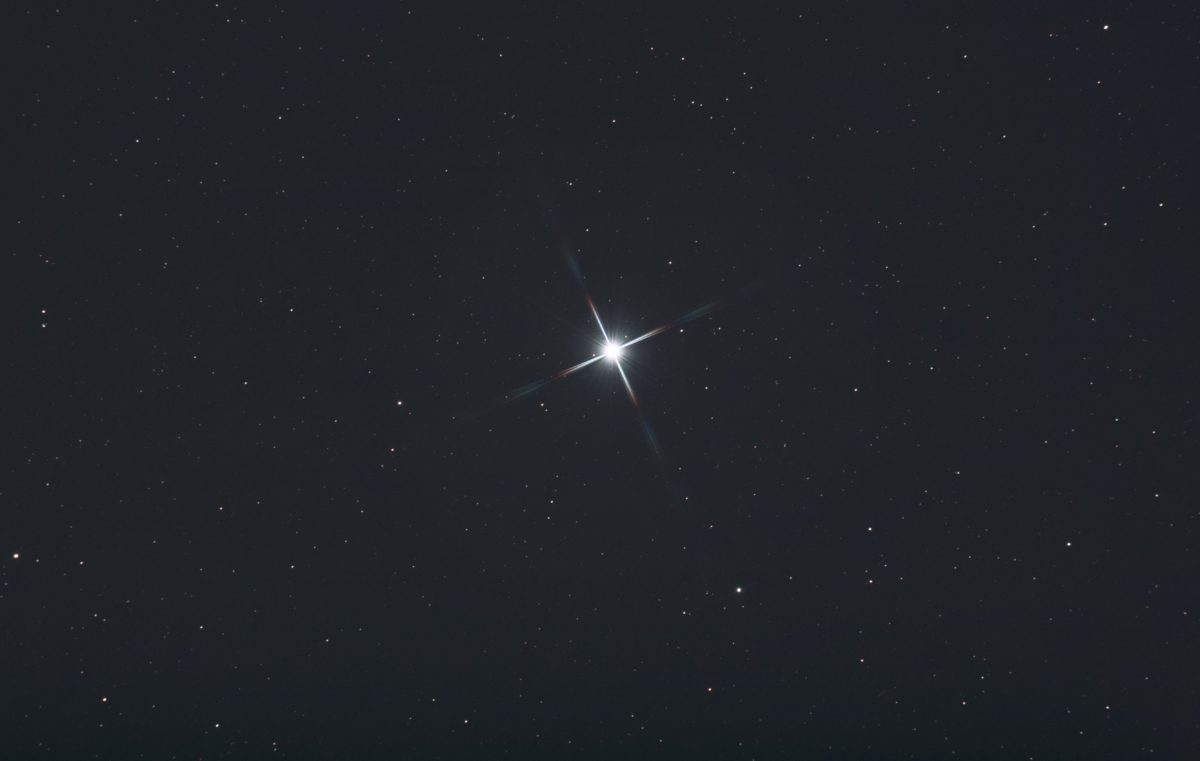In late October, a telescope in Hawaii detected a dim light source soaring valiantly through the night sky and an effort began to understand what would become a rare and exciting discovery.
Astronomers initially believed the mysterious object to be a small asteroid routinely making its journey around our solar system’s host star. But a closer examination over the following days revealed something startling: that it was indeed an asteroid but it’s not from this Solar System at all.
“The orbit calculations revealed beyond any doubt that this body did not originate from inside the Solar System, like all other asteroids or comets ever observed, but instead had come from interstellar space,” said a release from the European Southern Observatory.

The asteroid, confirmed not to be a comet by ESO researchers, has officially been classified as an interstellar asteroid. Its designation is 1l/2017 U1 or Oumuama. The asteroid passed closes to the Sun a month before it was discovered.
“We had to act quickly,” explains team member Olivier Hainaut from ESO in Garching, Germany. “`Oumuamua had already passed its closest point to the Sun and was heading back into interstellar space.”
The European Southern Observatory dispatched it’s Very Large Telescope array in Chile’s Atacama Desert to pin down data relating to Oumuamua’s brightness, color, and of course, it’s precise orbit. Researchers had to act quickly before the visiting asteroids light faded to nothing as it exited our solar system.
The Very Large Telescope array is the ESO’s “flagship facility” according to its website and is the world’s most sophisticated optical telescope.
A team of astronomers at the Institute for Astronomy in Hawaii led by Karen Meech found that the asteroid was dimming and brightening at extreme levels as it traveled. This was due to the spinning on its axis every 7.3 hours.
“This unusually large variation in brightness means that the object is highly elongated: about ten times as long as it is wide, with a complex, convoluted shape, said Karen Meech via an official release from the ESO. “We also found that it has a dark red color, similar to objects in the outer Solar System, and confirmed that it is completely inert, without the faintest hint of dust around it.”

Researchers believe that Oumuama is from the direction of the Vegan star system and is metallically dense with a rocky terrain on its surface. They estimate the asteroid to be 400 meters long.
“We are continuing to observe this unique object,” concludes ESO’s Olivier Hainaut, “and we hope to more accurately pin down where it came from and where it is going next on its tour of the galaxy. And now that we have found the first interstellar rock, we are getting ready for the next ones!”
 “For decades we’ve theorized that such interstellar objects are out there, and now – for the first time – we have direct evidence they exist,” said Thomas Zurbuchen from NASA’s Science Mission Directorate in Washington. “This history-making discovery is opening a new window to study formation of solar systems beyond our own.”
“For decades we’ve theorized that such interstellar objects are out there, and now – for the first time – we have direct evidence they exist,” said Thomas Zurbuchen from NASA’s Science Mission Directorate in Washington. “This history-making discovery is opening a new window to study formation of solar systems beyond our own.”
Photo Credits: ESO









